Interviews, Wave PoolsStream Line
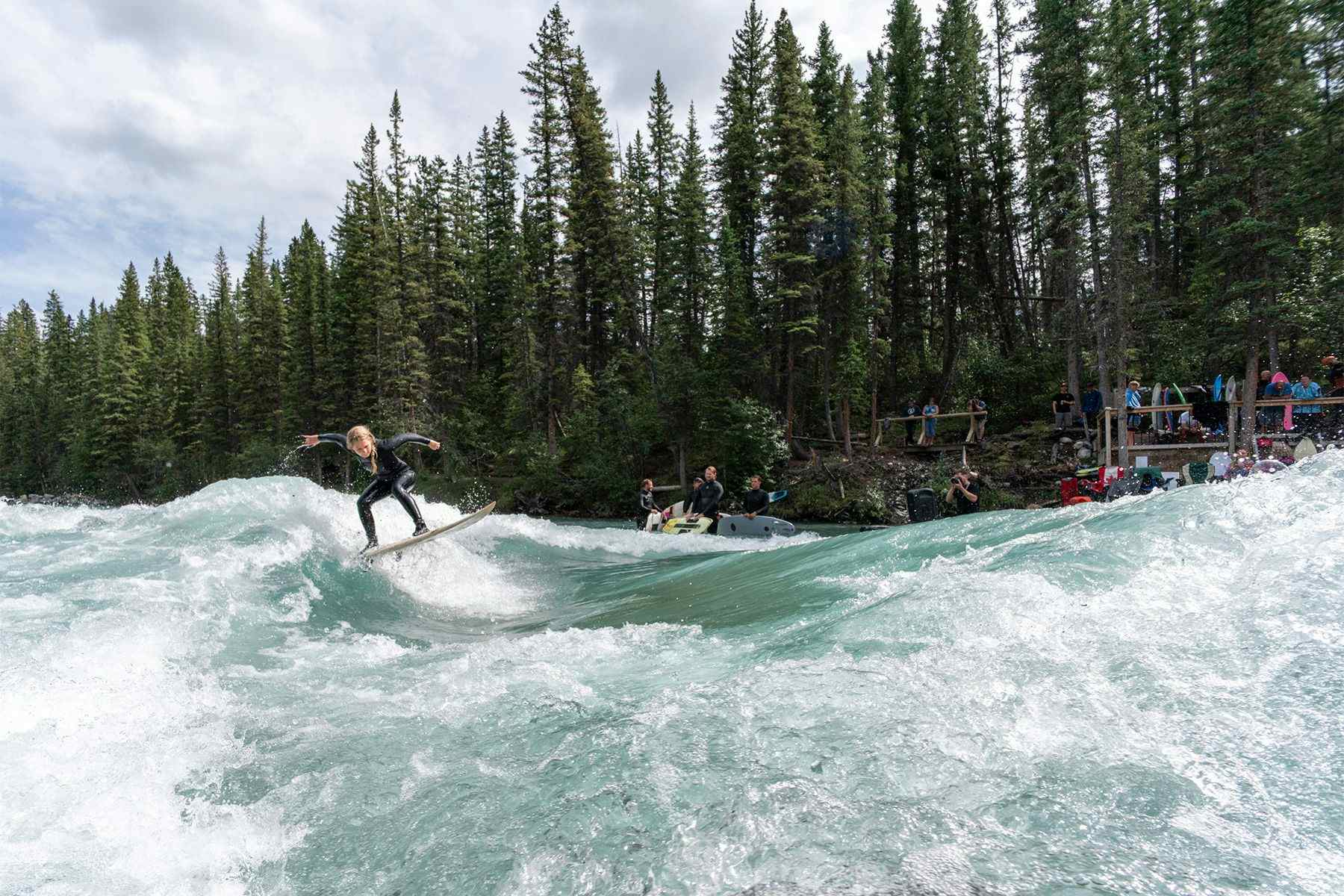
Surf Anywhere On Building Surfable River Waves
I surfed my first river wave back in 2016, during a road trip with my brother around the South Island of New Zealand. Sojourning in Wanaka after a week with no waves, we met a brewer at the local farmer’s market who told us about this river wave in the outskirts of town which, should the dam be open and the waters flowing, would ease our withdrawal symptoms. But besides the fact that we had surfboards under our arms and were walking from the parking lot toward a body of water with wetsuits on, it didn’t feel like we were going for a surf. We didn’t paddle out; we paddled upstream and waited for the current to push us back to where the wave was rolling. We didn’t duck dive, we didn’t sit, we didn’t pray for a set. The pop-up was wobblier than usual; there was a lot of pressure from the flowing waters speeding under our feet and the slightest abrupt change of directions made us catch a rail. When we fell, we didn’t breach for air – we jumped on our boards as quickly as possible and paddled as hard as we could toward the bank lest we were dragged too far downstream. In many ways, it was like surfing in reverse.

Whilst this experience five years ago is still novel for me, the act of riding a man-made wave is hardly considered a novelty. Artificial river waves have been a thing since 1970, when the first structure was built in the Eisbach Canal in Munich, Germany. From then on, surfing man-made waves in canals and rivers has gained popularity, and although the scene remains relatively overshadowed by its older and more popular cousin, there is a growing number of dedicated and tight-knit communities sprouting across the globe, and even a niche of scientific research unfolding.
Just as swell intensity/direction and bathymetry affect the shape of an ocean wave, the flow and configuration of a river and its bed dictate the shape of a river wave. As such, the majority of artificial river waves employ a hydraulic jump (a phenomenon caused by the existence of some kind of flow impediment downstream where a supercritical flow transforms into a subcritical flow, which, in river wave design, is often formed by structures that can be adjusted either manually, hydraulically or pneumatically) to “sculpt” the wave according to river conditions.
Still, whilst hydraulic jumps have been studied since the 16th century, almost all technologies currently used to generate surfable hydraulic jumps require a drop in the riverbed. This limitation renders such kind of system not only relatively complex and expensive to create and maintain, but also restricts the extent of applicability – which, in turn, restricts the reach and speed in which river surfing develops.
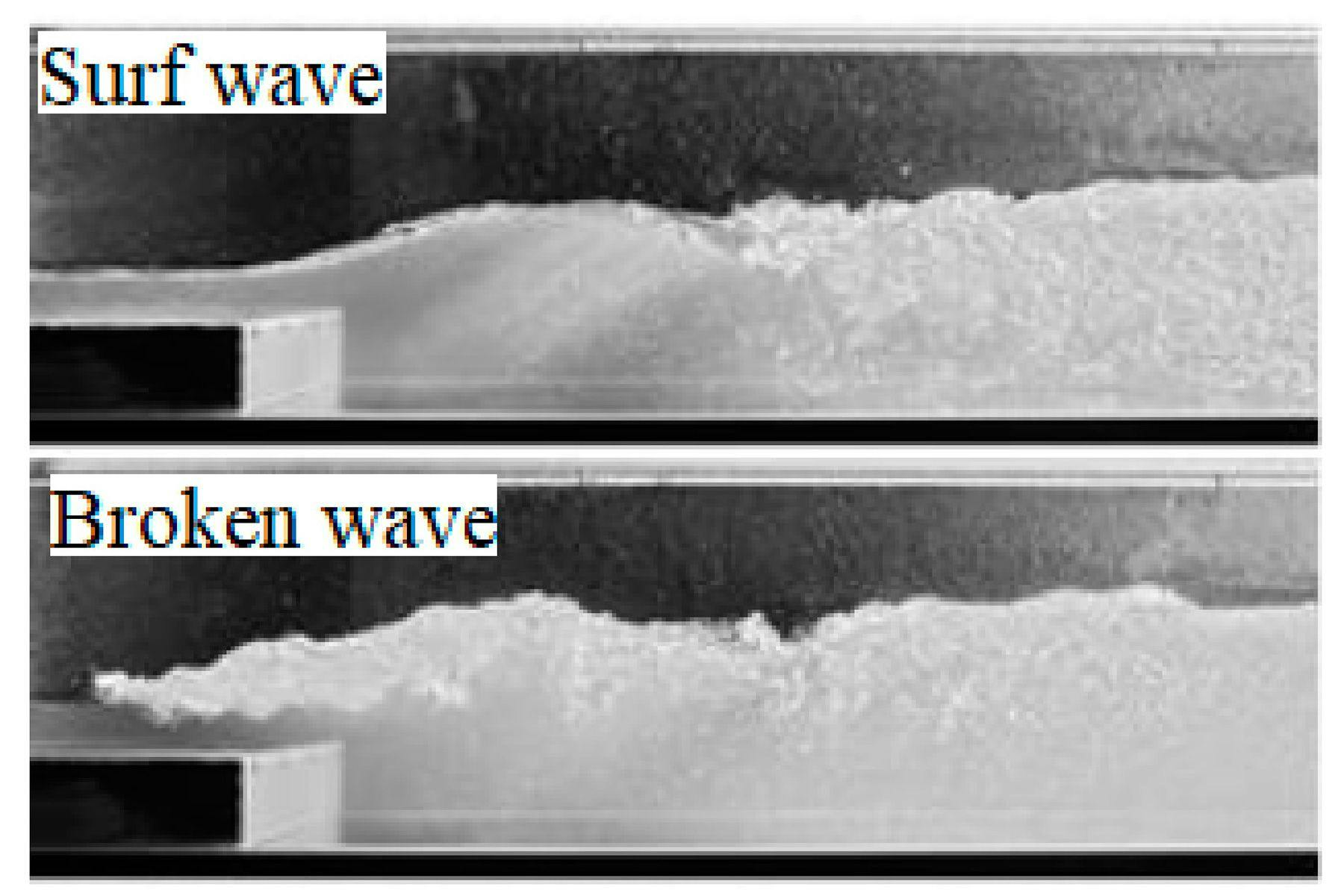
Neil Egsgard is someone who has been working hard to improve river wave technology and expand river surfing culture. With a H.B.Sc. in Physics and Math from the University of Toronto and over fifteen years of river surfing experience under his belt, Neil has surfed natural and man-made river waves across Canada, USA, and Europe, designed and built the Mountain Surf Wave in the Kananaskis River, which is the best manufactured river wave in Canada, and provided the design for the Bend Surf Wave in Bend, Oregon, the best manufactured river wave in the USA. Neil’s journey into river wave design started back in 2007, when, along with his friend Jacob Kelly Quinlan, they founded Surf Anywhere – a consultancy agency that develops and shares methods to reliably and inexpensively build river waves. Since then, Surf Anywhere has consulted on all aspects of river wave projects, partnering with local project teams and engineers to make the best river waves possible.
In their latest research project, whose findings were published on MDPI’s Water Journal this past May, Surf Anywhere joined forces with Dr Puria Asiaban and Dr Colin D. Rennie from the Department of Civil Engineering at the University of Ottawa, Canada, to develop a new mechanism that generates adjustable surf waves on a flat riverbed and to determine how such wave responds to the geometry of the structure and the conditions of flow.
The results of their groundbreaking research shine a light on how a simple and low cost fixed ramp with adjustable kickers can consistently create a variety of excellent surf and kayak waves over a wide range of river conditions. Surf Anywhere explains the research to the public via their website. The key educational sections are:
- Wave Research: A summary of the multi-adjustable kicker system research with a focus on creating great surf waves.
- Articles: Regularly published explanations of parts of the research and how it affects wave design.
- Kayak wave research report: A 90+ page report detailing how the multi-adjustable kicker system makes good kayak waves.
“Our vision is to have river waves spread like skate parks across the world. River surfing is life-changing, is very accessible, and has zero carbon emissions. River waves have big economic impacts, have minimal maintenance and operating costs, and wave success can be guaranteed.”
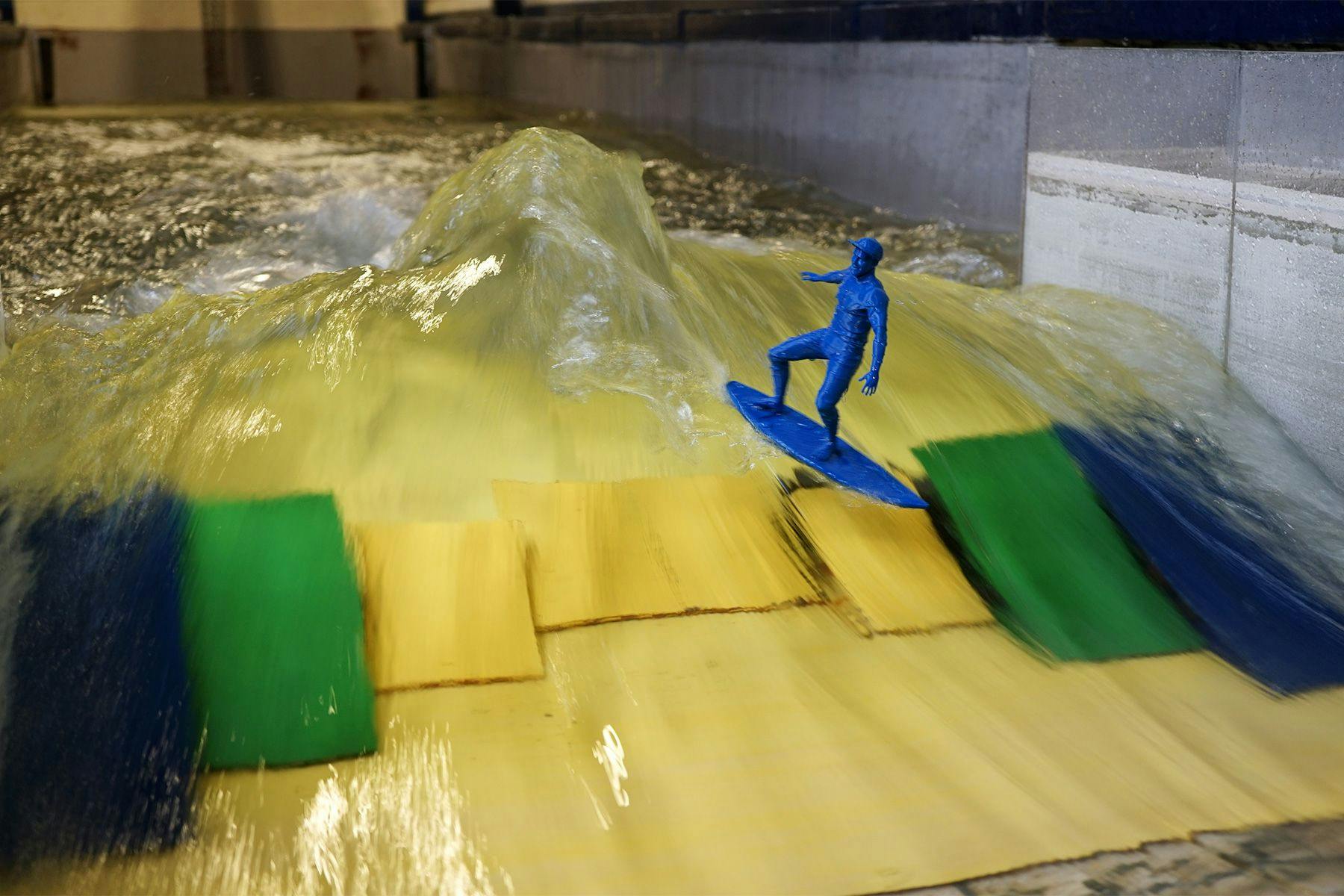
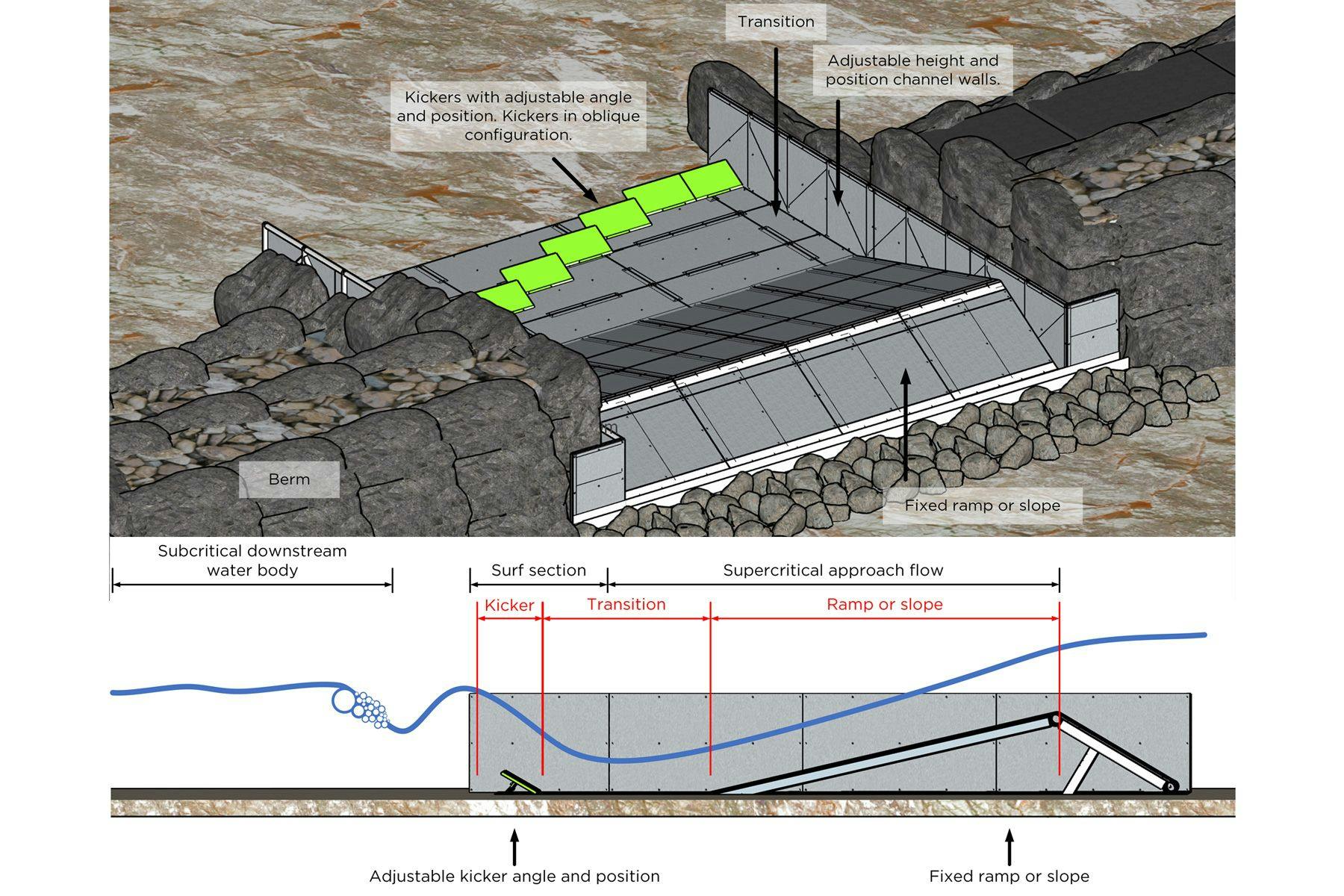
Surf Simply caught up with Neil to find out more about the study, the work of Surf Anywhere, and his thoughts on the future of river surfing.
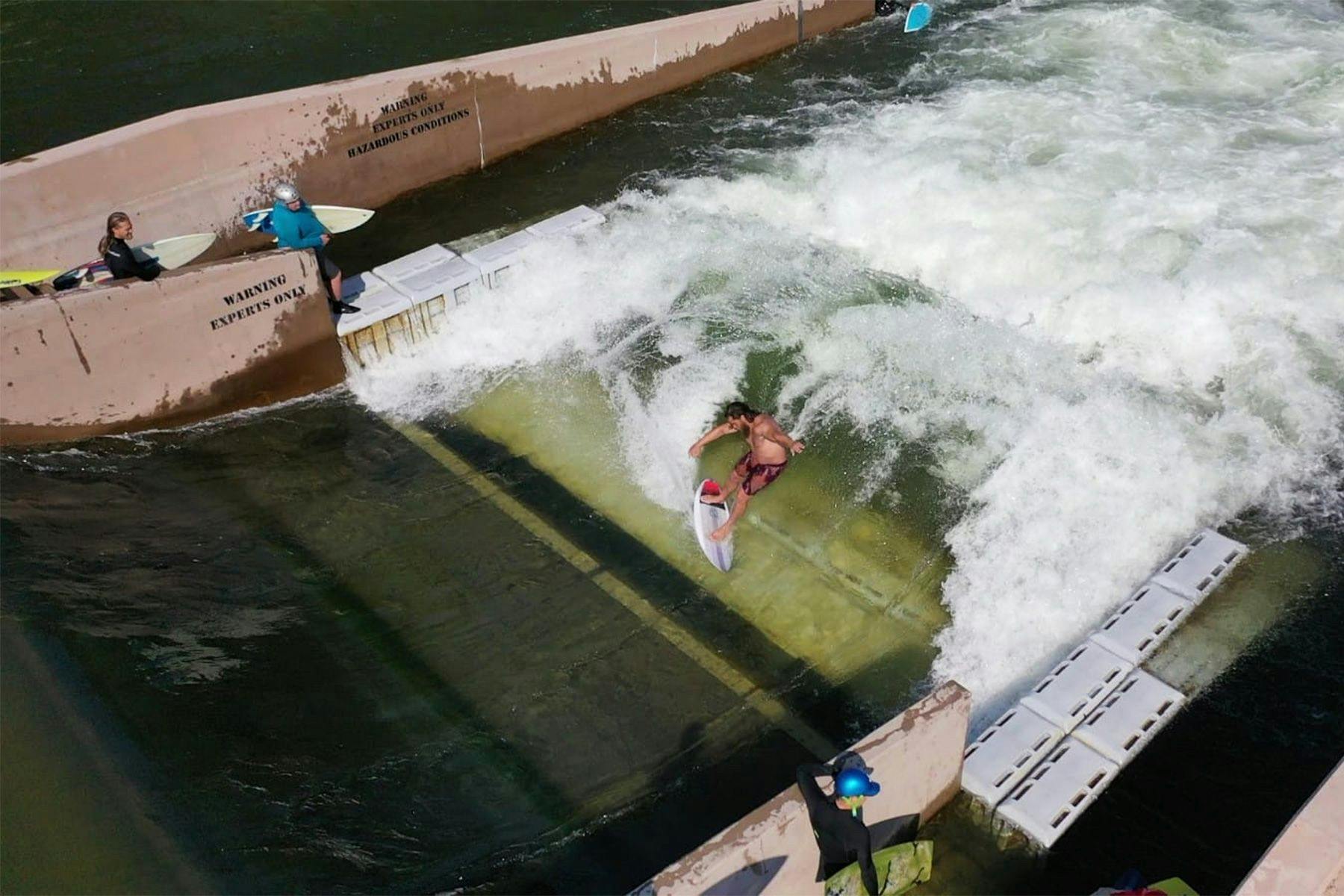
Neil, what are the main differences between river and ocean surf waves – both in terms of mechanics and surf performance?
River waves are stationary and change shape in one location while ocean waves are moving forwards and transform as the bottom changes. River waves compare to small to medium-sized ocean waves; they tend to be less steep than ocean waves because oceans waves are building and breaking as they move over shallow areas. That said, river waves are endless and allow for 100x to 1000x more surfing time per session. Good river waves allow for high performance; ocean waves allow for higher peak performance. Surf skill translates between river surfing and ocean surfing and vice versa. Also, river hazards are very different from ocean hazards.
What about those hazards?
River hazards vary from place to place. River surfing can be very low risk if done properly, and high risk if practised ignorantly. The river is relentless so if you get in a bad situation where you are resisting the water flow, like a leash or rope entrapment, you can drown. There is a huge body of information on river safety available from 100+ years of professional river recreation. The best safety practice is to assess the river wave and surrounding area and make appropriate safety decisions on gear, technique, and whether to surf or not. Safety assessment is a staple of all sports that involve irregular risk.
The primary dangers in river surfing are entrapments where a leash or body part is caught on the river bottom forcing you underwater to drown, rope entanglement where the rope wraps around the user and they are forced to the bottom to drown, and bottom impacts where surfers strike the bottom. Surf Anywhere recently developed and released public use signage about common river dangers. We also maintain a river surfing accident and incident database.
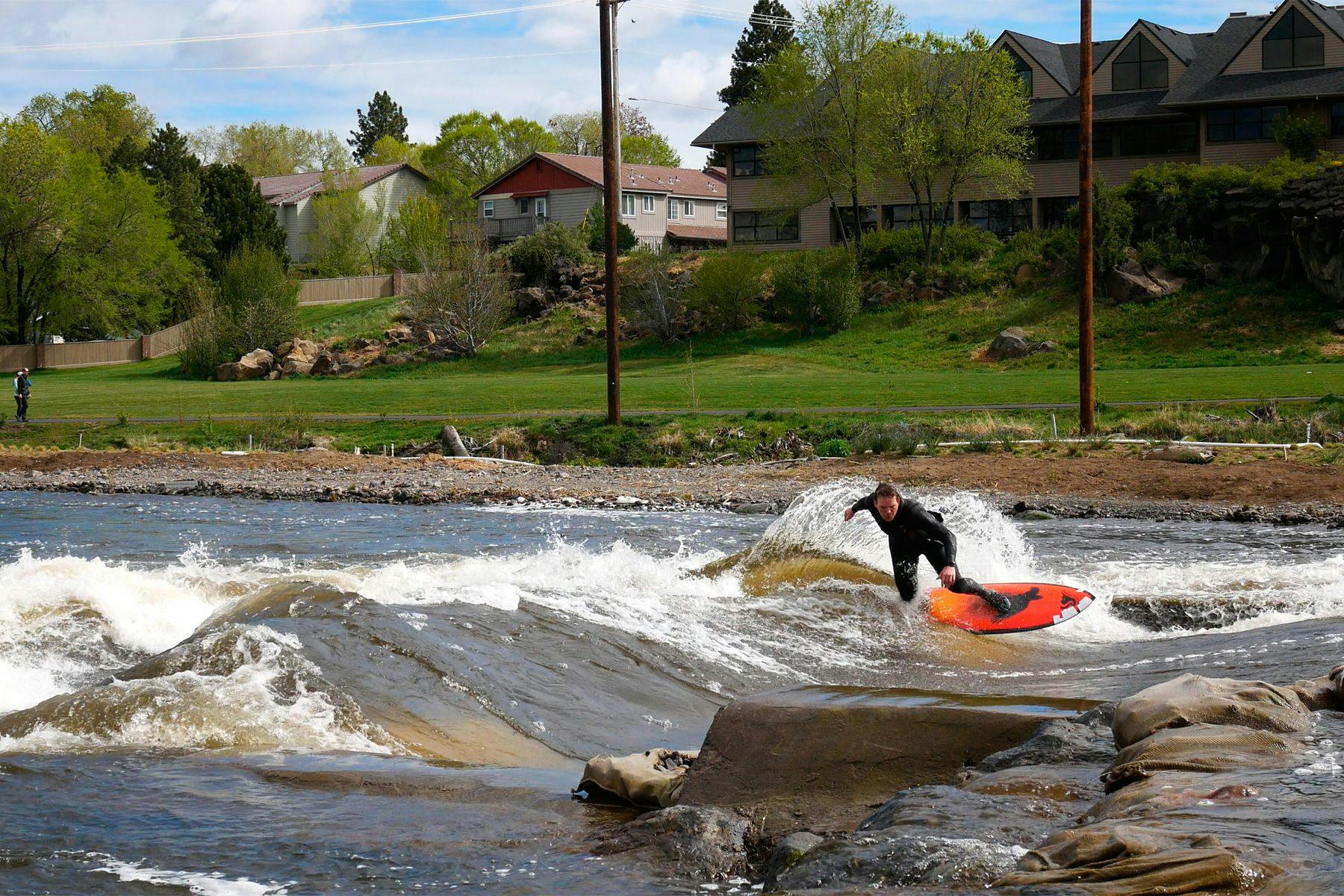
What are the different types of river waves?
Artificial river waves are currently only perpendicular, whereas natural river waves have lefts, rights, perpendicular, a-frames, barrels, flat waves, steep waves, shallow waves, deep waves, and more. Surf Anywhere’s latest research and design focused on creating new artificial wave shapes with simple, cost-effective, and public designs; it demonstrated how simple structures can reliably make different wave shapes. The design – called the multi adjustable kicker system – comes in two primary configuration types:
- Flat bottom for controlled tailwater that produces a very wide range of wave shapes.
- Ramp bottom that consistently creates great waves when there is uncontrolled and highly variable tailwater.
Each configuration type can produce different wave shapes, including lefts, rights, bowls, and A-frame. With real-time adjustability, the wave shapes can transform while the surfer is on the wave. Both wave styles can make good surf waves and good kayak waves, which allows usage by another user group. The flat bottom design provides a wider variety of wave shapes. The kicker sled provides simple adjustability and good waves for large changes in tailwater.
What do you have to think about when building surf river wave?
The focus is on finding a good location/spot, building a team/support/awareness, and raising funds. The design is far down the list of importance because there are already great design options such as what Surf Anywhere is researching and detailing on our website. That said, there are still some critical design requirements:
- 4 m/s water velocity or higher.
- About 1m of drop will provide this velocity.
- 1 m3/s of flow per meter of width or higher.
- The smallest viable wave width is 5.m, which requires a minimum flow of 5 m3/s.
- Adjustability.
- Waves are very sensitive to changes in tailwater, wave structure angles, and flow per width.
- Proper adjustability guarantees a good wave.
- Easy and permitted dewatering.
- Wave structure maintenance and inspection are much easier if the wave structure can be dewatered.
- Larger adjustments such as attaching contours to the wave structure to create a wider range of wave shapes or changing the channel width can only be done if the wave is dewatered.
- Dewatering on demand often needs to be included in the permitting submissions.
- Sediment deposition management.
- Rivers carry and drop huge amounts of sediment which changes flow patterns and water levels. The wave design needs to account for sediment movement and be able to adjust for it.
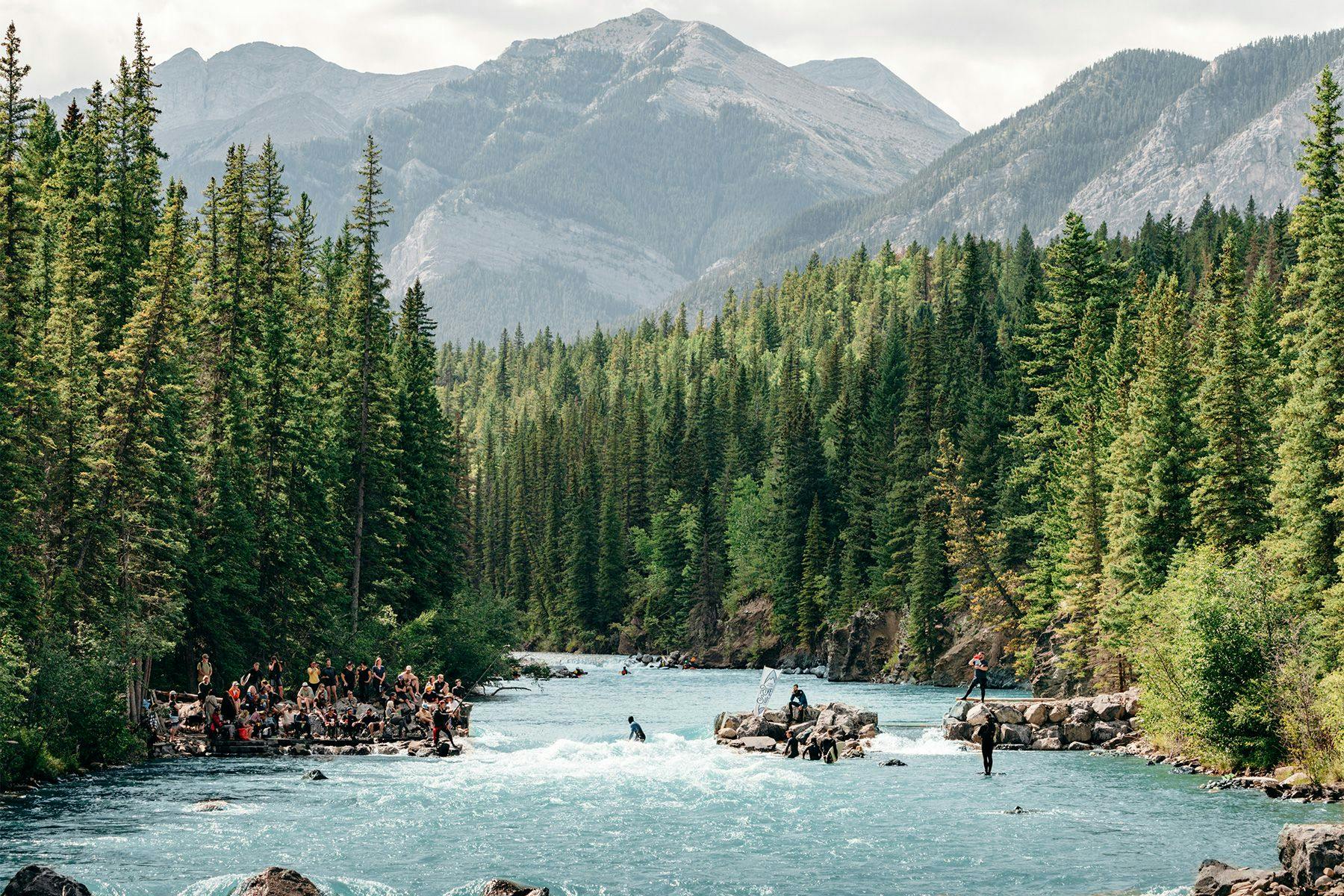
One thing that comes to mind when thinking of an artificially built river wave is the environmental implications. How do you go about preventing/mitigating the impact in your projects?
River wave projects are huge opportunities for environmental improvements as the projects should improve local river habitat as part of the overall design. Increased river use makes people care about and understand the river, which helps them make decisions that benefit the river. Almost all river wave projects include extensive environmental reviews and high standards for minimizing negative impacts and having positive environmental impacts. Besides, river waves have a positive impact on climate change since they a) allow local and regional surfing which reduces the need for carbon-intensive travel, b) produce no carbon, c) require almost no electricity or power, d) do not require water filtration.
In the paper, you and the team propose the creation of a surfable and adjustable river wave by installing a multi-adjustable kicker on the flat riverbed. Can you please tell us how it works and the different systems used to move it?
The multi-adjustable kicker system works by using gravity to accelerate water over a smooth ramp and redirecting the water with hinged plates. Changing the position of the plates creates different wave shapes. The main methods of moving the multi adjustable kicker system are:
- Manual: The simplest method for moving the kickers is to divert flow away from the channel, unbolt the kickers, and rebolt the kickers in a new position.
- Kicker sled on a ramp: A sled spans the width of the channel and the kickers are installed on the sled. The sled is moved up and down the ramp in the channel; its position can be controlled with simple mechanical, hydraulic, or pneumatic systems installed at the edge of the channel. The sled position and kicker angle can be adjusted by hand crank.
- Tracked kickers: In a more complex system, the kickers can be installed on tracks with hydraulics or pneumatics used to adjust the kicker angle. The kicker positions could be adjusted using powered rollers under the kicker or by connecting to a pulling mechanism under the ramp.
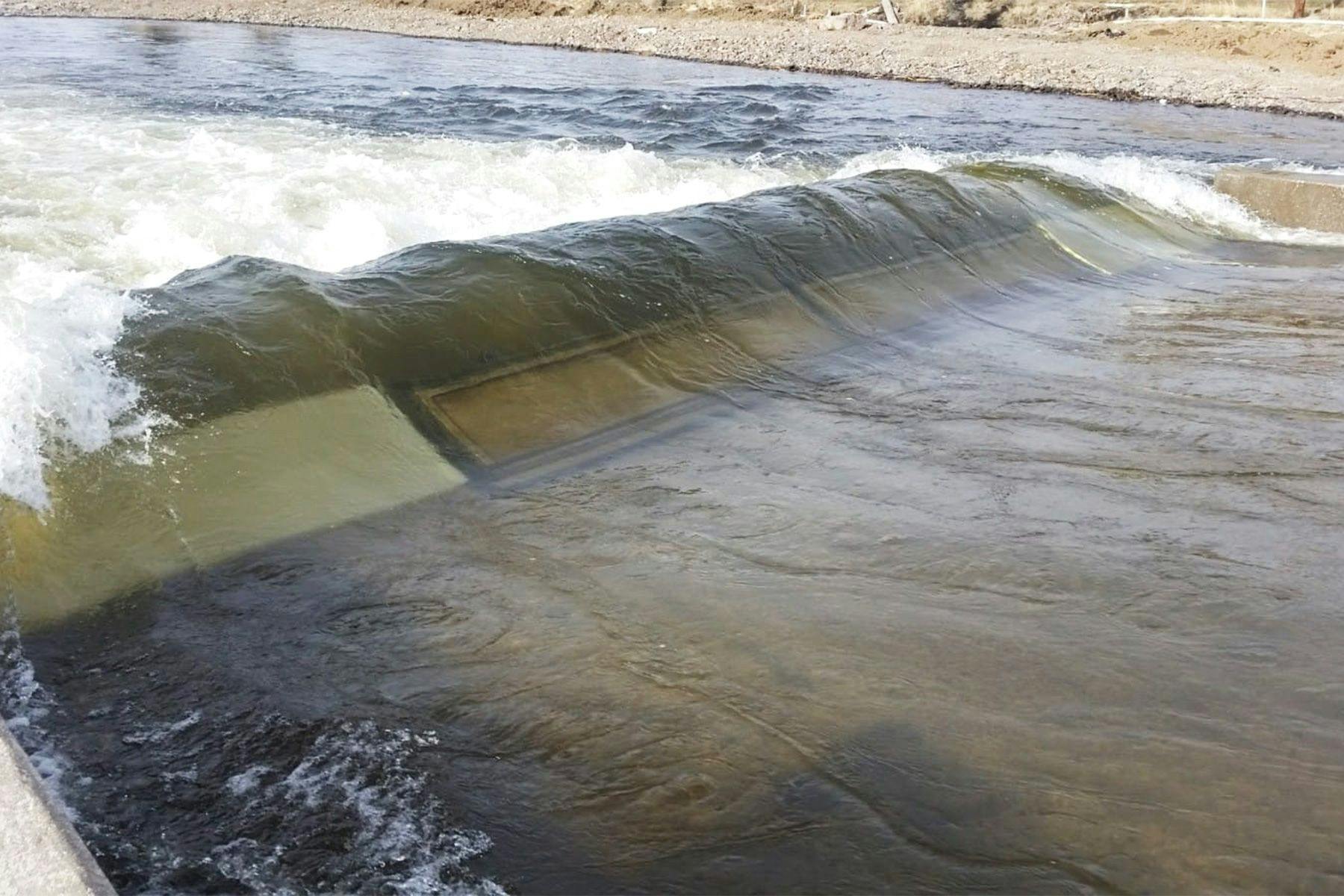
Speaking of design, what were some of the challenges you have come across in the research?
The big design challenge was figuring out what areas of the wave structure have big impacts on wave quality and what areas have minimal impacts. The focus of the research was confirming a simple method of consistent wave formation that could be used on river wave projects anywhere and minimize costs. The key areas of adjustment are:
- Water velocity at the wave trough which is controlled by the height of the drop.
- Flow intensity which is controlled by the width of the channel and percentage of available flow going through the channel.
- Position of the kickers in the channel.
- Angle of the kickers.
- Tailwater elevation relative to kicker elevation which is controlled by moving the kickers up and down the ramp or by a separate tailwater control downstream.
And what were some of the most surprising findings?
The shape and configuration of the ramp that accelerates the water had minimal impact on good wave formation. We tried a few different ramp configurations but found that shapes aside from the perpendicular ramp made it harder to form a good wave. Another surprise was that the bowl and attack kicker configurations resulted in very large wave peaks in the middle of the wave. The waves were surprisingly beautiful and even resulted in the stable barrel type feature parallel to the channel. Also, when using the kickers on the ramp configuration, the wave height was relatively stable as the kickers moved up and down the ramp. We expected the wave to rapidly shrink as it moved up the ramp and rapidly grow as it moved down the ramp, but found the wave height only changed slightly as the kickers moved up and down the ramp, with the exception of placement at the top of the ramp where the wave height rapidly decreased.
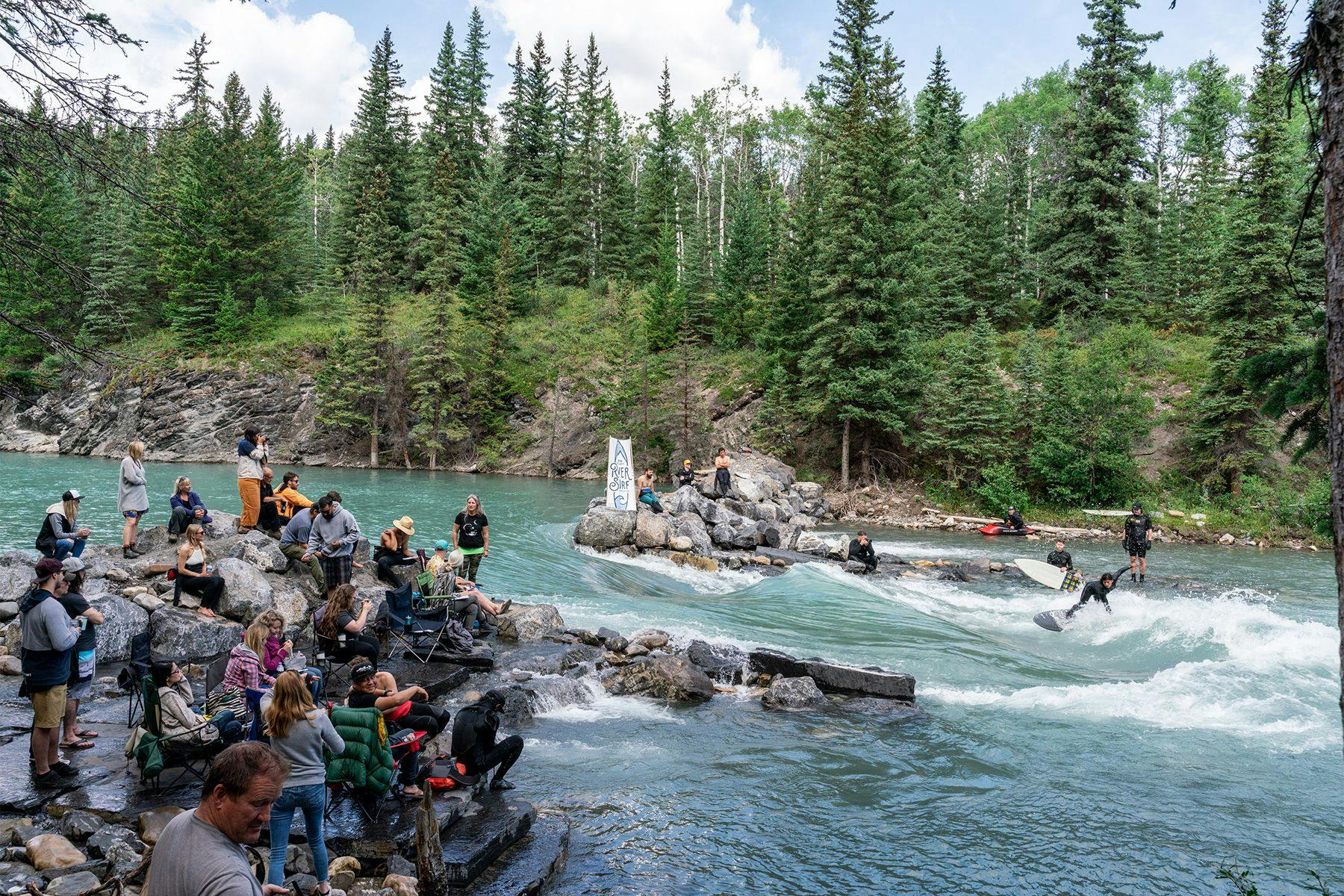
Let’s shift back to Surf Anywhere and the work you guys do. One thing that struck me when browsing your website was that you have decided to keep research and technology open-source, as well as provide a bunch of other resources accessible for all.
We want more good river waves to exist, we want to surf better waves, and we want to make the world a little better. We love river surfing and know river waves improve local economies, culture, environment, and quality of life. Making the research, technology, and other information accessible for all significantly reduces barriers to good wave construction. There are lots of whitewater parks around the world but few good river waves. Creating whitewater parks is very challenging and takes many years. By openly sharing knowledge, Surf Anywhere allows existing and new projects to easily and successfully include good waves.
Surf Anywhere also champions the idea of building a community around river surfing…
Community around river surfing is very important for a number of reasons. Strong surf community involvement in whitewater park projects is a predictor of successful wave design since river recreation development needs surfers advocating for good waves, otherwise whitewater parks have low quality waves and miss all the benefits of good river waves. Another reason is that artificial river waves typically need significant maintenance and improvement after a few decades, and a strong community will help build support and funding for those projects. A strong community also increases general awareness that high quality river waves are possible and have strong benefits. The increased awareness allows more municipalities to plan and build good waves. Finally, river waves naturally generate community because users are always in close proximity. Surfers on the wave can hear encouragement from the line up and surfers have conversations with each other in the line up.
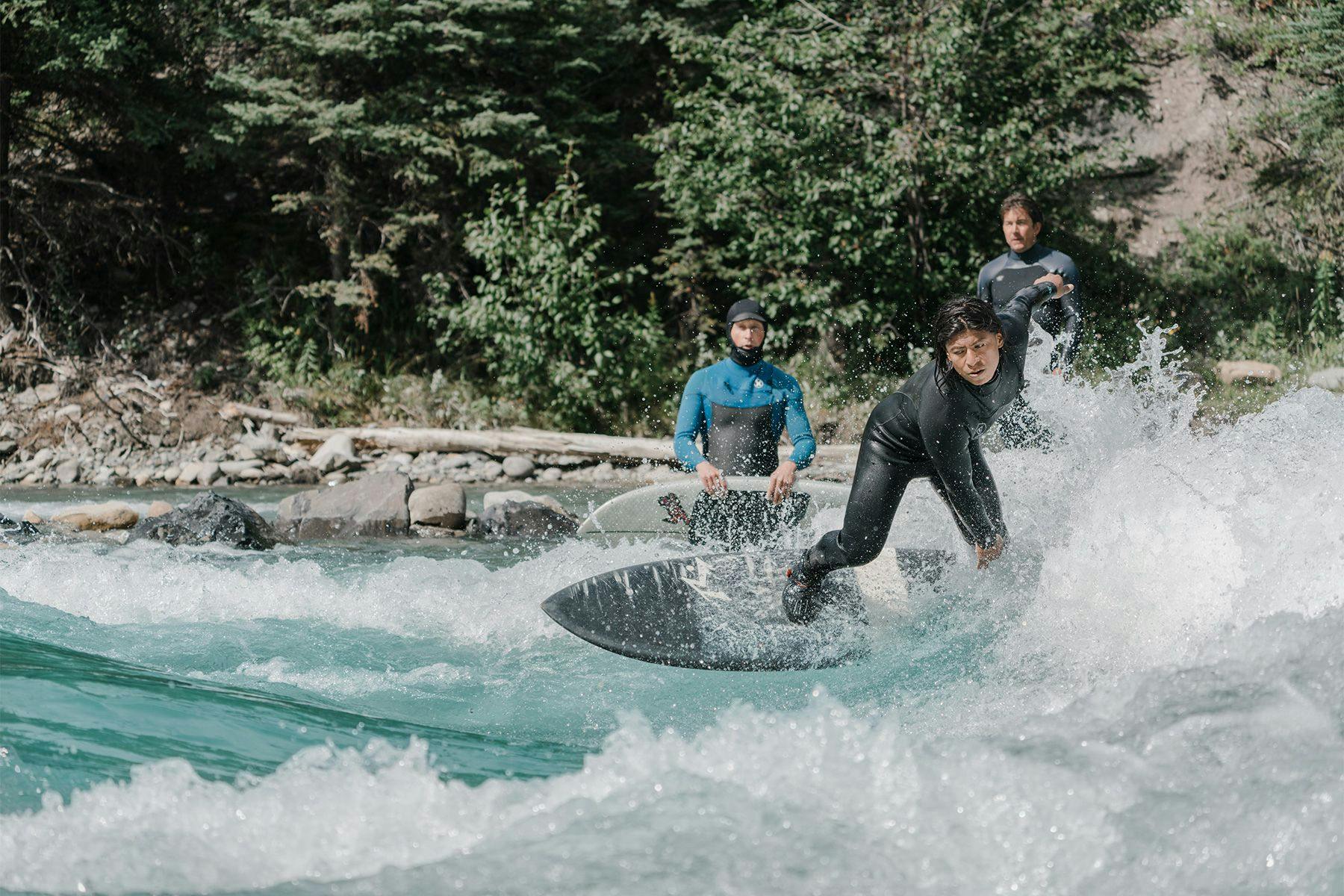
One of your next steps for 2022 is to build 3D waves using the multi-adjustable kicker system in the Lower Kananaskis River. Can you tell us a bit more about the idea and where you’re at?
You can see details about the project at albertariversurfing.com/perfectwave. If we win the grant in December 2021 then we expect to complete the new waves in May 2023. The project will consist of a multi-adjustable kicker system on a flat bottom or on a ramp or on a combination. The basic system will use manual movement of components when the flow is almost zero. The system will be designed to allow for powered movement that uses on-site micro hydro to charge batteries and the stored electricity to move the multi-adjustable kicker system. The force to move the system would be provided by mechanical, pneumatic, or hydraulic means and would be determined during the detailed design of the system.
As for the location, it is ideal because of several reasons. Firstly, the river has a bedrock bottom that provides a good foundation for construction. Then, the flow is at either 30cms or almost 0 cms everyday due to hydropeaking operation of an electric dam upstream which has been active for almost 100 years. As such, it can be turned off on demand by coordinating with the dam operators. Moreover, the river has a 40 year history of recreational river feature modification, and we have built waves there in 2014 and 2019.
What are your thoughts about the future of river wave design? And river wave surfing communities?
There is huge potential for better river waves and an endless demand. Surfers make up about 1% of the population based on large studies from the US and UK. Most surfers live inland and must travel to surf. Surf Anywhere is pushing the envelope of river wave design and our research will help make the dynamic, interesting, and consistent waves that will expand the sport. Beyond our research, there are lots of areas for exploration in wave design. River wave surf communities organically grow anytime a river wave exists. The more waves we build, the more happy communities will appear. The future of river wave surf communities is very bright.
*********
The author would like to thank Neil Egsgard and Dr Puria Asiaban for their assistance with the article.